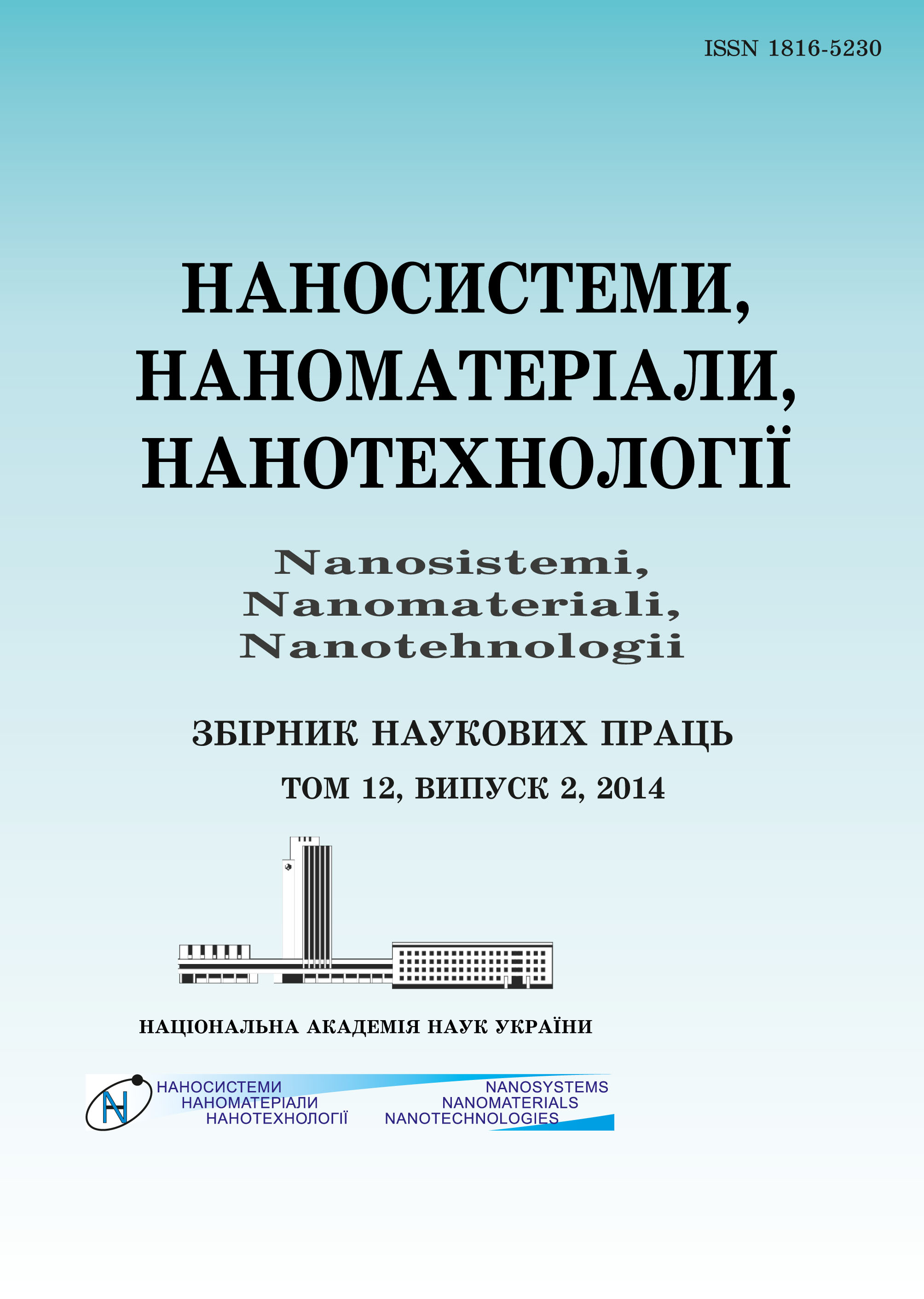|
|
|||||||||
 |
Year 2021 Volume 19, Issue 1 |
|
|||||||
|
|||||||||
Issues/2021/vol. 19 /Issue 1 |
Said Benramache, Yacine Aoun, Rime Gacema, Houda Mourghadea
«Synthesis and Annealing Temperature Effect on Structural, Optical and Electrical Properties of NiO Thin Films Deposited by Sol–Gel Technique»
0147–0158 (2021)
PACS numbers: 73.61.Ga, 78.20.Ci, 78.66.Hf, 78.67.Bf, 81.05.Dz, 81.07.Bc, 81.20.Fw
In the present paper, thin NiO films are prepared on glass substrates, using spin-coating method for sol–gel solution with a concentration of 0.7 M. There were the NiO films annealed at different temperatures of 25, 450, 500, 550 and 600\(^{\circ}\)C for 2 hours. XRD spectra indicate that the films exhibit polycrystalline structure, which belongs to the cubic type of NiO. It is obtained that the crystallite sizes are increased to the maximum value of 50.32 nm along (200) plane and obtained at 600\(^{\circ}\)C. The crystallinity of the thin films is improved at a high temperature, for which there are only a few defects. UV–vis spectrophotometric detection of NiO films shows an average transmittance of about 85%. The band-gap energy is increased after annealing from 3.101 to 3.855 eV for unannealed films and annealed ones at 500\(^{\circ}\)C, respectively. At high annealing temperature, the thin NiO films become less disordered with fewer defects, which are related to the Urbach energy that can be obtained by the order of magnitude as 180 meV at 600\(^{\circ}\)C. The transparent thin NiO films become conducting to have a minimum value of the sheet resistance that is revealed at a lower temperature. The best-estimated structure and optical characterization are achieved for the NiO films annealed at 500\(^{\circ}\)C.
Keywords: NiO, thin films, transparent conducting films, annealing temperature, spin-coating method
https://doi.org/10.15407/nnn.19.01.147
References
1. N. Beji, M. Reghima, M. Souli, and N. K. Turki, J. Alloys Compd., 675: 231(2016).2. Y. Aoun, B. Benhaoua, B. Gasmi, and S. Benramache, Main Group Chem.,14: 27 (2015).
3. F. Cinquini, L. Giordano, and G. Pacchioni, Theor. Chem. Account., 120: 575(2008).
4. H. S. Gavale, M. S. Wagh, R. B. Ahirrao, and S. R. Gosavi, Journal of Na-noscience and Technology, 5: 610 (2019).
5. X. Chen, L. Zhao and Q. Niu, J. Elect. Mater., 41: 3382 (2012).
6. Y. Shin, Y. Hwang, Y. Um, D. A. Tuan, S. Cho, and H. Park, J. KoreanPhys. Soc., 63: 1199 (2013).
7. D. S. Dalavi, M. J. Suryavanshi, S. S. Mali, D. S. Patil, and P. S. Patil,J. Solid State Electrochemistry, 16, No. 1: 253 (2012).158Said BENRAMACHE, Yacine AOUN, Rime GACEMA et al.
8. K. O. Ukoba, A. C. Eloka-Eboka, and F. L. Inambao, Renewable and Sus-tainable Energy Reviews, 82: 2900 (2018).
9. T. Miyata, H. Tanaka, H. Sato, and T. Minami, J. Mater. Sci., 41: 5531(2006).
10. Y. S. Lin, D. J. Lin, L. Y. Chiu, and S. W. Lin, J. Solid State Electrochem-istry, 16: 2581 (2012).
11. X. C. Lou, X. J. Zhao, Y. L. Xiong, and X. T. Sui, J. Sol–Gel Sci. Technol.,54: 43 (2010).
12. C. Chen, P. J. Perdomo, M. Fernandez, and A. Barbeito, Journal of EnergyStorage, 8: 198 (2016).
13. Y. A. Kumar Reddy, B. Ajitha, P. S. Reddy, M. S. Pratap Reddy, andJ. H. Lee, Electron. Mater. Lett., 10: 907 (2014).
14. A. Diha, S. Benramache, and B. Benhaoua, Optik, 172: 832 (2018).
15. S. Benramache, Y. Aoun, S. Lakel, H. Mourghade, R. Gacem, andB. Benhaoua, Journal of Nano- and Electronic Physics, 10: 06032 (2018).
16. S. Benramache and B. Benhaoua, Superlattices Microstruct., 52: 1062(2012).
17. H. L. Chen, Y. M. Lu, and W. S. Hwang, Mater. Transact., 46: 872 (2005).
18. S. Benramache, B. Benhaoua, and O. Belahssen, Optik, 125: 5864 (2014).
19. Y. Aoun, B. Benhaoua, S. Benramache, and B. Gasmi, Optik, 126: 5407(2015).
20. B. Benhaoua, S. Abbas, A. Rahal, A. Benhaoua, and M. S. Aida, Superlat-tices Microstruct., 83: 78 (2016).
 This article is licensed under the Creative Commons Attribution-NoDerivatives 4.0 International License ©2003—2021 NANOSISTEMI, NANOMATERIALI, NANOTEHNOLOGII G. V. Kurdyumov Institute for Metal Physics of the National Academy of Sciences of Ukraine. E-mail: tatar@imp.kiev.ua Phones and address of the editorial office About the collection User agreement |